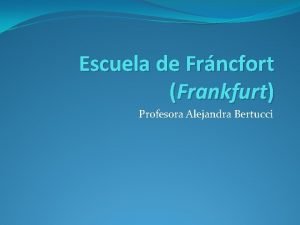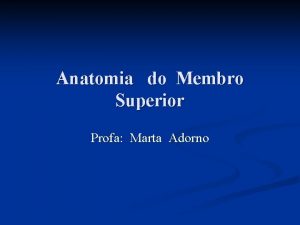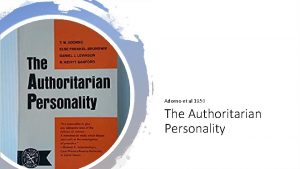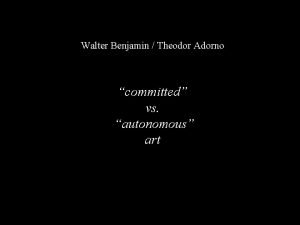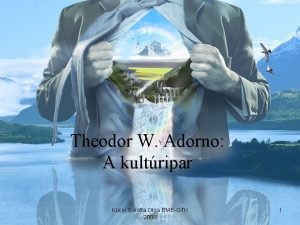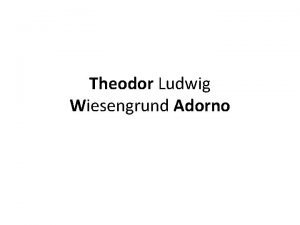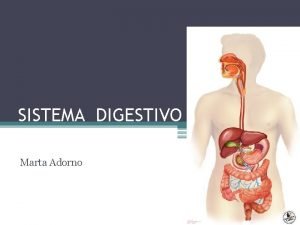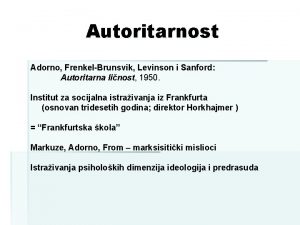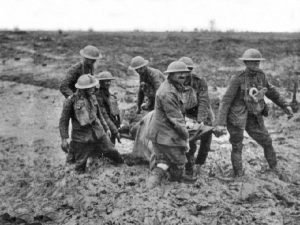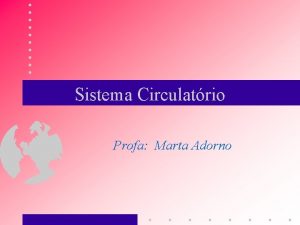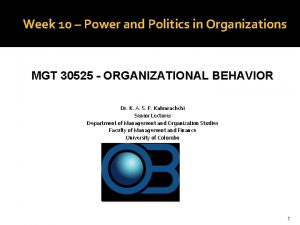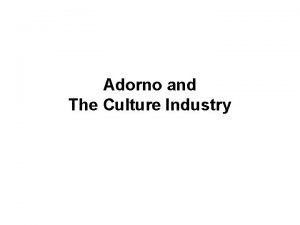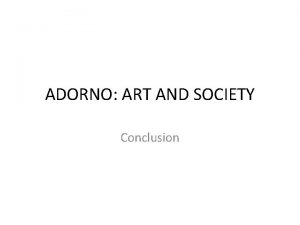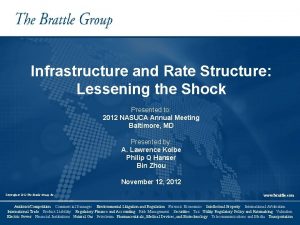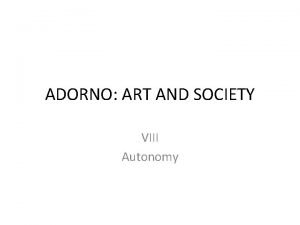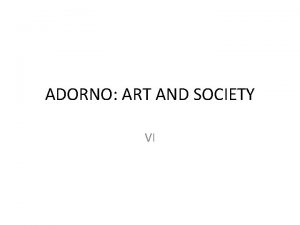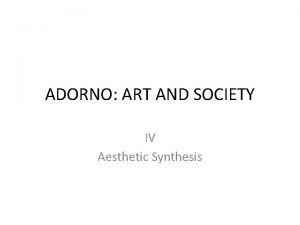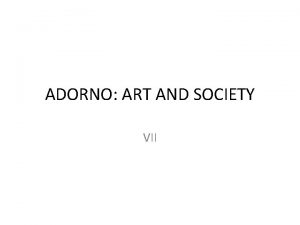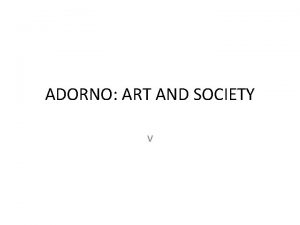ADORNO ART AND POLITICS IX Reconciliation Reconciliation Lessening












- Slides: 12

ADORNO: ART AND POLITICS IX Reconciliation

Reconciliation • Lessening of the suffering • Non-repressive relating of subject to object, as well as of subject to subject - respecting the object - respecting the nature • Art represent the aspect of reality which itself points beyond reality

„Although art is tempted to anticipate a nonexistent social whole, its non-existent subject, and is thereby more than ideology, it bears at the same time the mark of this subject's non-existence. The antagonisms of society are nevertheless preserved in it. Art is true insofar as what speaks out of it— indeed, it itself—is conflicting and unreconciled, but this truth only becomes art's own when it synthesizes what is fractured and thus makes its irreconcilability determinate. Paradoxically, art must testify to the unreconciled and at the same time envision its reconciliation; this is a possibility only for its nondiscursive language. “ (AT, 168)


• The current sociohistorical totality is the untrue (x Hegel) • Untruth of various cultural phenomena shows this untruth to be that of the society as a whole - enables phenomena to refer beyond themselves to their possible truth in a transformed society

„The aesthetic unity of the multiplicitous appears as though it had done no violence, but had been chosen by the multiplicitous itself. It is thus that unity—today as real as was ever the diremption —crosses over into reconciliation. “ „Reconciliation is the comportment of artworks by which they become conscious of the nonidentical. “ (AT, 134)

• Cognitive and structural principle • A non-violent unity of diverse in the reconciliation of all living things ÞThis reconciliation is prefigured in art, where a non-violent resolution is achieved between the particular and the universal, between the part and the whole • Capable of true cognition (Erkenntnis)

• The presence of reconciliation in an unreconciled world is something that can be only be conceived in terms of aporia - art manifests the truth in a sensual, non-discursive mode, i. e. not as a concept - knowledge gained only via the aesthetic experience - the aesthetic manifestation of truth is something immediately evident but at the same ineffable • The truth of art thus has to be mediated by philosophy



• Art as an imitation of nature - nature as it doesn not yet exist, i. e. nature in a state of reconciliation => the non-violent togetherness of the diverse, with the particularity of each individual entity remaining unharmed • The truth of art resides in the non-falsification of reality, in the fact that reality as it is is manifested in the work of art • Art speaks of an antagonistic society in the horizon of a possible reconciliation => art anticipates a society that does not yet exist

• As a non-discursive mode of knowing reality, art is in this world but not completely of it - artworks able to oppose current society and at the same are able to arrange society‘s scattered elements into a whole differing from the one where blind domination and exchange prevail => A structural change might occur if society imitated works of art
 Imagenes de herbert marcuse
Imagenes de herbert marcuse Marta adorno
Marta adorno Adorno et al
Adorno et al Adorno vs benjamin
Adorno vs benjamin Adorno kultúripar
Adorno kultúripar Theodor ludwig wiesengrund adorno
Theodor ludwig wiesengrund adorno Goteira parietocólica significado
Goteira parietocólica significado Autoritaran značenje
Autoritaran značenje Intercostais
Intercostais Theodor adorno beatles
Theodor adorno beatles Veia cava superior
Veia cava superior Power and politics in organizations
Power and politics in organizations Opportunities brought by media and information
Opportunities brought by media and information
